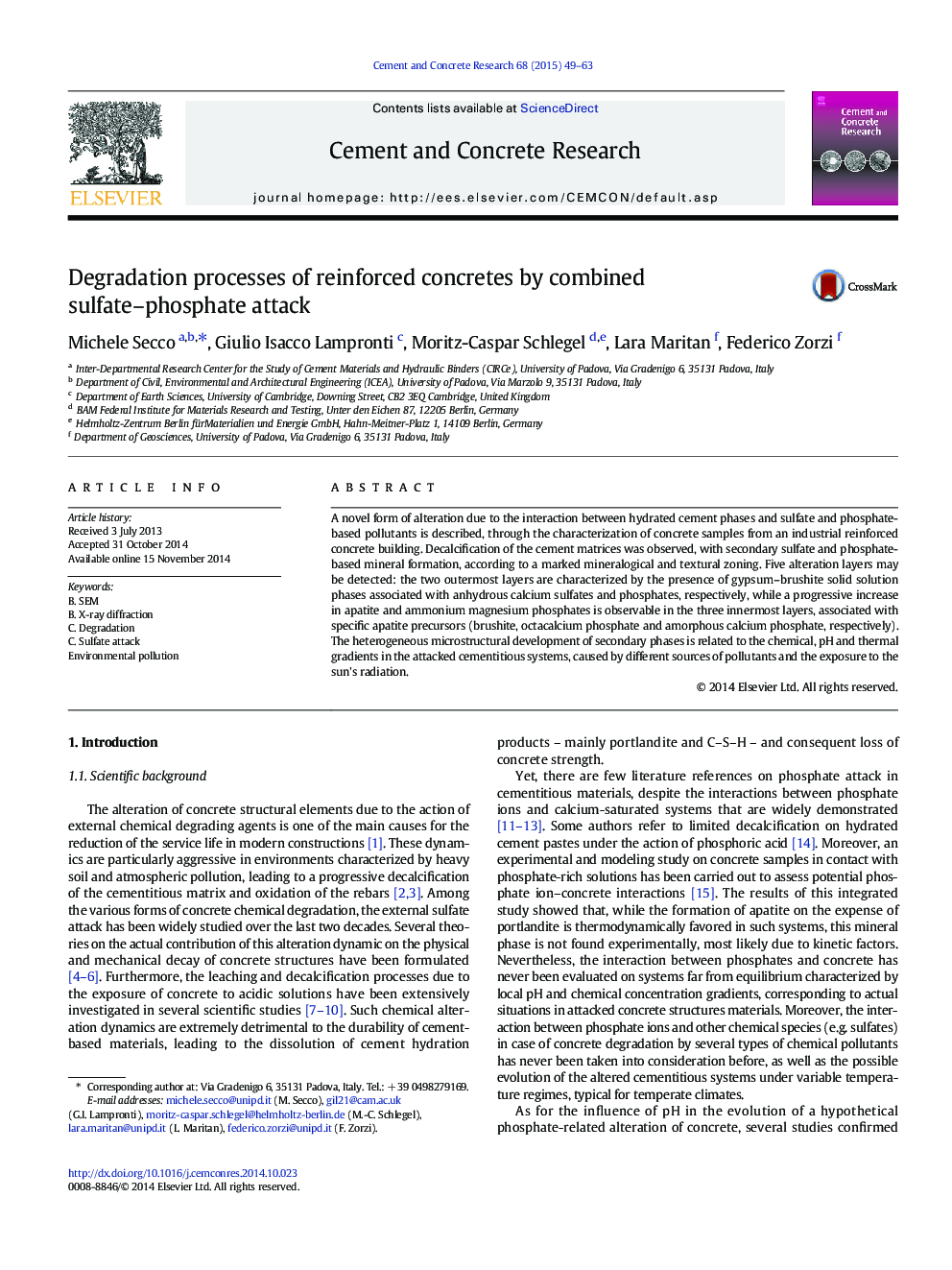| Article ID | Journal | Published Year | Pages | File Type |
|---|---|---|---|---|
| 1456234 | Cement and Concrete Research | 2015 | 15 Pages |
A novel form of alteration due to the interaction between hydrated cement phases and sulfate and phosphate-based pollutants is described, through the characterization of concrete samples from an industrial reinforced concrete building. Decalcification of the cement matrices was observed, with secondary sulfate and phosphate-based mineral formation, according to a marked mineralogical and textural zoning. Five alteration layers may be detected: the two outermost layers are characterized by the presence of gypsum–brushite solid solution phases associated with anhydrous calcium sulfates and phosphates, respectively, while a progressive increase in apatite and ammonium magnesium phosphates is observable in the three innermost layers, associated with specific apatite precursors (brushite, octacalcium phosphate and amorphous calcium phosphate, respectively). The heterogeneous microstructural development of secondary phases is related to the chemical, pH and thermal gradients in the attacked cementitious systems, caused by different sources of pollutants and the exposure to the sun's radiation.
